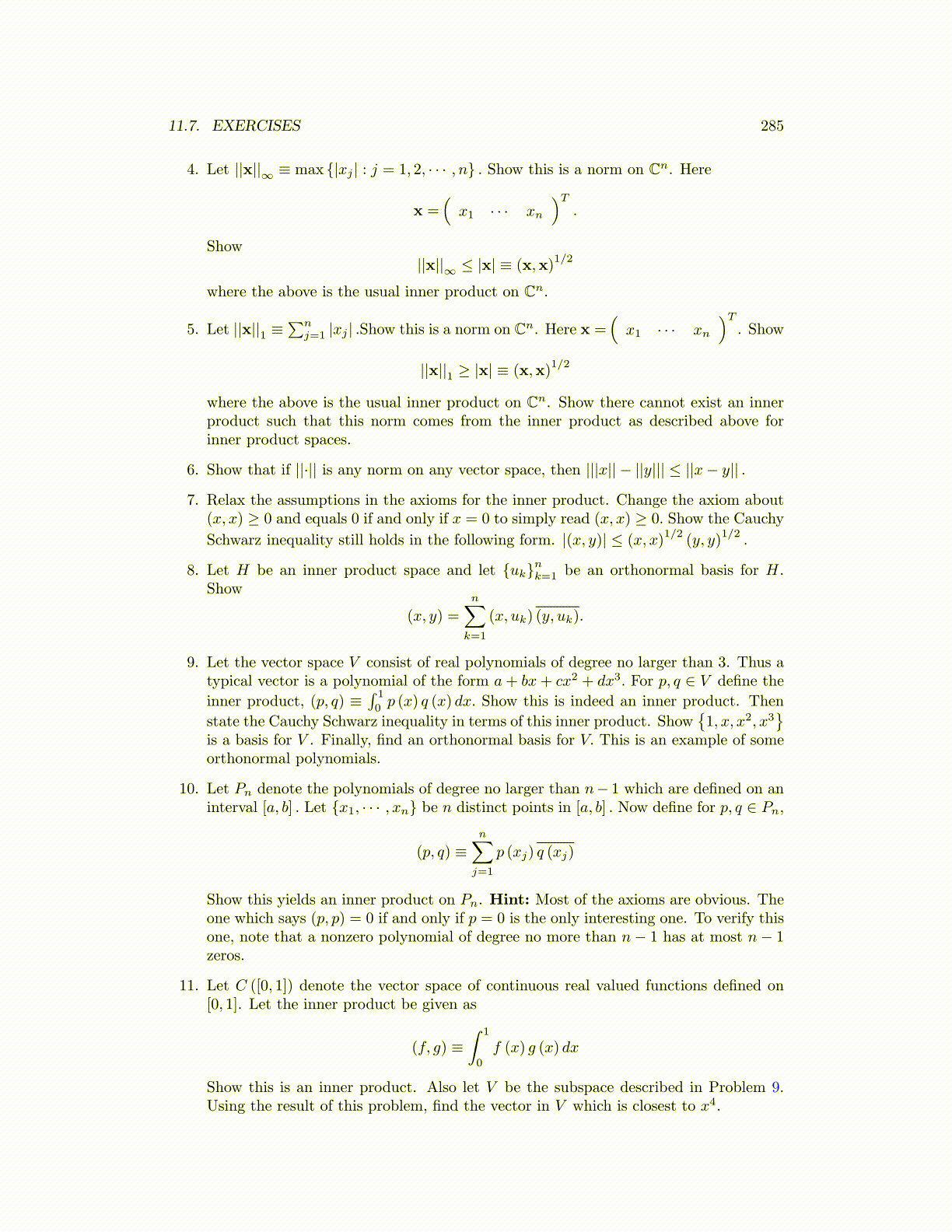
11.7. EXERCISES 285
4. Let ||x||∞ ≡ max {|xj | : j = 1, 2, · · · , n} . Show this is a norm on Cn. Here
x =(x1 · · · xn
)T.
Show||x||∞ ≤ |x| ≡ (x,x)
1/2
where the above is the usual inner product on Cn.
5. Let ||x||1 ≡∑n
j=1 |xj | .Show this is a norm on Cn. Here x =(x1 · · · xn
)T. Show
||x||1 ≥ |x| ≡ (x,x)1/2
where the above is the usual inner product on Cn. Show there cannot exist an innerproduct such that this norm comes from the inner product as described above forinner product spaces.
6. Show that if ||·|| is any norm on any vector space, then |||x|| − ||y||| ≤ ||x− y|| .
7. Relax the assumptions in the axioms for the inner product. Change the axiom about(x, x) ≥ 0 and equals 0 if and only if x = 0 to simply read (x, x) ≥ 0. Show the Cauchy
Schwarz inequality still holds in the following form. |(x, y)| ≤ (x, x)1/2
(y, y)1/2
.
8. Let H be an inner product space and let {uk}nk=1 be an orthonormal basis for H.Show
(x, y) =
n∑k=1
(x, uk) (y, uk).
9. Let the vector space V consist of real polynomials of degree no larger than 3. Thus atypical vector is a polynomial of the form a+ bx+ cx2 + dx3. For p, q ∈ V define the
inner product, (p, q) ≡∫ 1
0p (x) q (x) dx. Show this is indeed an inner product. Then
state the Cauchy Schwarz inequality in terms of this inner product. Show{1, x, x2, x3
}is a basis for V . Finally, find an orthonormal basis for V. This is an example of someorthonormal polynomials.
10. Let Pn denote the polynomials of degree no larger than n− 1 which are defined on aninterval [a, b] . Let {x1, · · · , xn} be n distinct points in [a, b] . Now define for p, q ∈ Pn,
(p, q) ≡n∑
j=1
p (xj) q (xj)
Show this yields an inner product on Pn. Hint: Most of the axioms are obvious. Theone which says (p, p) = 0 if and only if p = 0 is the only interesting one. To verify thisone, note that a nonzero polynomial of degree no more than n− 1 has at most n− 1zeros.
11. Let C ([0, 1]) denote the vector space of continuous real valued functions defined on[0, 1]. Let the inner product be given as
(f, g) ≡∫ 1
0
f (x) g (x) dx
Show this is an inner product. Also let V be the subspace described in Problem 9.Using the result of this problem, find the vector in V which is closest to x4.